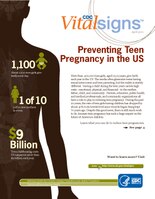
Photo from wikipedia
Purpose To explore whether the adverse pregnancy outcomes in first frozen embryo transfer (FET) cycles affect live birth and neonatal outcomes in the subsequent pregnancy? Methods This was a retrospective… Click to show full abstract
Purpose To explore whether the adverse pregnancy outcomes in first frozen embryo transfer (FET) cycles affect live birth and neonatal outcomes in the subsequent pregnancy? Methods This was a retrospective study. Women with a history of adverse pregnancy outcomes in first FET cycles started their subsequent embryo transfer cycles. The adverse pregnancy outcomes included biochemical pregnancy, ectopic pregnancy, and first-trimester pregnancy loss. The main outcomes of present study were live birth rate and neonatal outcomes. Results Results showed patients with first-trimester pregnancy loss in first FET cycles had a 95 percent greater chance of live birth in subsequent FET cycles (OR 1.95, 95% CI 1.33–2.88). However, the biochemical pregnancy/ectopic pregnancy in initial FET cycles did not affect the chance of live birth in second cycles (biochemical pregnancy: OR 1.21, 95% CI 0.82–1.77; ectopic pregnancy: OR 1.06, 95% CI 0.55–2.05). The neonatal outcomes of singletons were not affected by the number of embryo transfer cycles. Conclusions Patients with first-trimester pregnancy loss in first FET cycle had a greater chance of live birth in second FET cycles, but the biochemical pregnancy/ectopic pregnancy in first FET cycles did not significantly affect the live birth in second FET cycles. The three types of adverse pregnancy outcomes in first FET cycles did not affect neonatal outcomes in the second cycles.
Journal Title: Archives of Gynecology and Obstetrics
Year Published: 2020
Link to full text (if available)
Share on Social Media: Sign Up to like & get
recommendations!